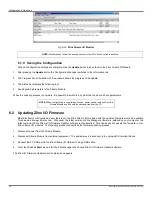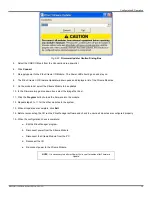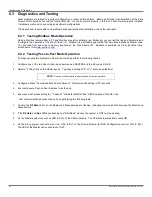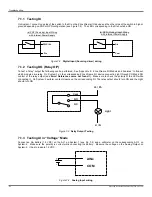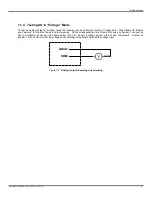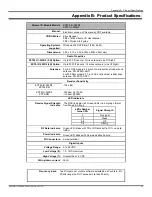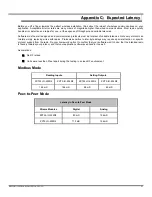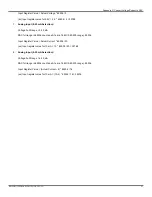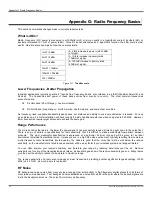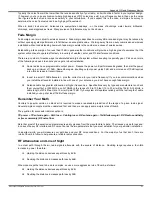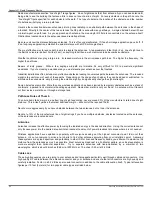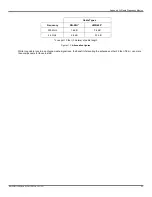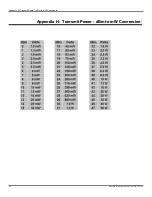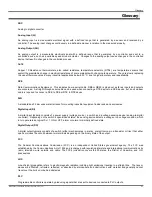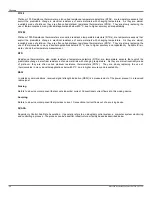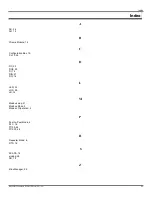
Appendix G: Radio Frequency Basics
62
Manual Documentation Number: ZXTx-IO-x-0712m
A
A
p
p
p
p
e
e
n
n
d
d
i
i
x
x
G
G
:
:
R
R
a
a
d
d
i
i
o
o
F
F
r
r
e
e
q
q
u
u
e
e
n
n
c
c
y
y
B
B
a
a
s
s
i
i
c
c
s
s
This section summarizes changes made in current product version.
What is dBm?
Radio Frequency (RF) power is measured in milli-Watts (mW) or, more usually in a logarithmic scale of decibels (dB), or
decibels referenced to 1 mW of power (dBm). Since RF power attenuates as a logarithmic function, the dBm scale is most
useful. Here are some examples of how these scales relate:
1mW = 0dBm
A 2-fold increase in power yields 3dBm
of signal.
2mW = 3dBm
A 10-fold increase in power yields
10dBm of signal.
4mW = 6dBm
A 100-fold increase in power yields
20dBm of signal.
10mW = 10dBm
100mW = 20dBm
1W = 30dBm
Figure G-1
The dBm scale
Lower Frequencies - Better Propagation
Industrial applications typically operate in “license free” frequency bands, also referred to as ISM (Industrial, Scientific, and
Medical). The frequencies and power of these bands varies from country to country. The most common frequencies
encountered are:
2.4 GHz band (Short Range)
– nearly worldwide.
915 MHz band (Long Range)
– North America, South America, and some other countries.
As frequency rises, available bandwidth typically rises, but distance and ability to overcome obstacles is reduced. For any
given distance, a 2.4 GHz installation will have roughly 8.5 dB of additional path loss when compared to 900 MHz. However,
lower frequencies require larger antennas to achieve the same gain.
Range Performance
The more sensitive the radio is, the lower the power signal it can successfully receive, stretching right down to the noise floor.
There is so much variety in specifications for radio sensitivity, that it is difficult to make a meaningful comparison between
products. The most meaningful specification is expressed at a particular bit error rate and will be given for an ideal
environment shielded from external noise. Unless you are in a high RF noise environment, typically resulting from numerous
similar-frequency radio transmitters located nearby, the odds are good that the noise floor will be well below the receive
sensitivity, so the manufacturer‟s rated receive sensitivity will be a key factor in your wireless system and range estimates.
You can often improve your receive sensitivity, and therefore your range, by reducing data rates over the air. Receive
sensitivity is a function of the transmission baud rate so, as baud rate goes down, the receive sensitivity goes up. Many radios
give the user the ability to reduce the baud rate to maximize range.
The receive sensitivity of a radio also improves at lower frequencies, providing another significant range advantage of 900
MHz (vs. 2.4 GHz) - as much as six to twelve dB!
RF Noise
RF background noise comes from many sources, ranging from solar activity to high frequency digital products to all forms of
other radio communications. That background noise establishes a noise floor which is the point where the desired signals are
lost in the background ruckus. The noise floor will vary by frequency.
Содержание ZXT24-IO-222R2
Страница 6: ......

